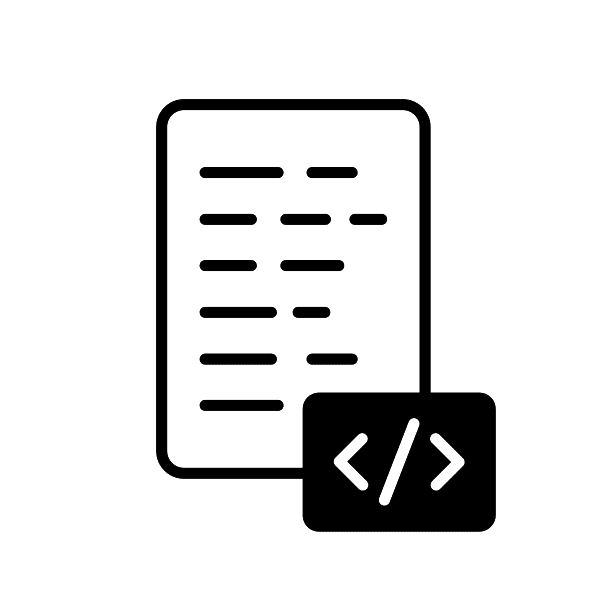Excel in coding with React, the formidable JavaScript library.

Our teachers and tutors graduated from top universities








Overview

Customised coding curriculum
Select your preferred coding languages or topics, and we'll connect you with an expert tutor who will ensure you're well-versed.

Test taking strategies
Get diagnosed about your weaknesses and strengths, and learn how to optimize your performance.

Private lesson
No need to accommodate other students. Learning is customised your perfect pace and difficulty so you are always improving.
About React
React, a dynamic JavaScript library, excels in crafting interactive user interfaces (UIs). It enables the creation of agile views for each application state, ensuring efficient updates and rendering as your data evolves.
Originating from Facebook, React has swiftly gained prominence and is now a staple in modern web development. Its component-driven architecture fosters reusability and maintainability, simplifying the development process, especially suited for single-page applications (SPAs) prioritizing fast, interactive user experiences.
One of React’s standout attributes is the virtual DOM, optimizing rendering and enhancing app performance. This virtual DOM acts as an intermediary, minimizing direct DOM manipulations and improving update efficiency.
React boasts a thriving ecosystem, offering various tools and libraries that expand its capabilities. React Native, for instance, facilitates the creation of native mobile apps for Android and iOS, utilizing the same React structure. This cross-platform development approach conserves time and resources, ensuring a consistent user experience across platforms.
Furthermore, React features a relatively gentle learning curve, particularly if you’re already acquainted with JavaScript and HTML. This makes it an excellent choice for beginners entering web development and seasoned developers aiming to diversify their skill set. Despite its simplicity, React is robust enough to power intricate applications, evident in its use by platforms like Facebook, Instagram, and Airbnb. Proficiency in React positions you at the forefront of modern web development, a skill highly sought after as businesses prioritize user experience and interface design.
React seamlessly integrates with various back-end technologies, making it versatile for full-stack development. Its active community and a plethora of third-party libraries open doors to diverse career prospects in web and mobile app development. Its popularity ensures comprehensive documentation and robust community support, aiding newcomers in getting started and aiding experienced developers in tackling complex challenges.
Description
React revolutionizes JavaScript libraries, favored by industry leaders like Facebook and Instagram for dynamic, high-performance User Interfaces (UI). Proficiency in React, facilitated by our course, unlocks opportunities for specialized UI roles in mobile and single-page applications.
By mastering React, you’ll gain a deep understanding of component-based architecture, state management, and virtual DOM manipulation. This knowledge will empower you to create seamless and interactive user experiences, setting you on a path to excel in the JavaScript ecosystem.
What you will learn
- Discover why React is the preferred choice for contemporary web design.
- Create dynamic UI components from the ground up.
- Enhance your fundamental JavaScript programming skills.
Requirements
- Ages 13-18
- A programmer who is comfortable with HTML and one other programming language will be able to pick up React in a week or less
Student FAQs About Coding with React
The Virtual DOM is a memory-based representation of actual DOM elements. In React, it serves as a tool for efficiently updating the real DOM, reducing direct manipulation and enhancing performance. React achieves this by comparing the current Virtual DOM with the previous one and determining the minimal changes needed before updating the real DOM accordingly.
React Components serve as the fundamental building blocks of any React application, encapsulating the logic, structure, and styling for various UI elements. Two primary types of React components are Functional and Class components. Functional components are more straightforward and easier to test, while Class components are typically reserved for more intricate logic and state management tasks.
JSX, which stands for JavaScript XML, enables the creation of HTML elements and components using JavaScript. While not mandatory for React development, JSX enhances code readability and writability, providing a syntax familiar to those experienced with HTML and XML.
React Hooks are a feature designed to facilitate state management and other React functionalities without the need for class components. Hooks like useState and useEffect offer a cleaner and more straightforward approach to managing state and handling side-effects. This simplification enhances codebase maintainability and comprehension.
Props, an abbreviation for “properties,” refer to variables transmitted from a parent component to a child component. They enhance component reusability by providing dynamic values. It’s essential to note that props are read-only and should not undergo modifications within the child component; any alterations should be carried out within the parent component.
How it works
1
Request a tutor
Let us know your goals and age range. We'll figure out a plan to help get you there.
2
Match with a tutor
We'll recommend you a tutor based on your needs and goals, or you can request a specific tutor.
3
Start a free trial
Experience a free trial lesson with your new tutor and see if your learning style matches.
4
Keep it up!
If everything went well, sign up to keep going! You can choose the pacing of the lessons
Need more info?
Let's talk.
Leave your phone number, and we’ll call you back to discuss how we can help you.


